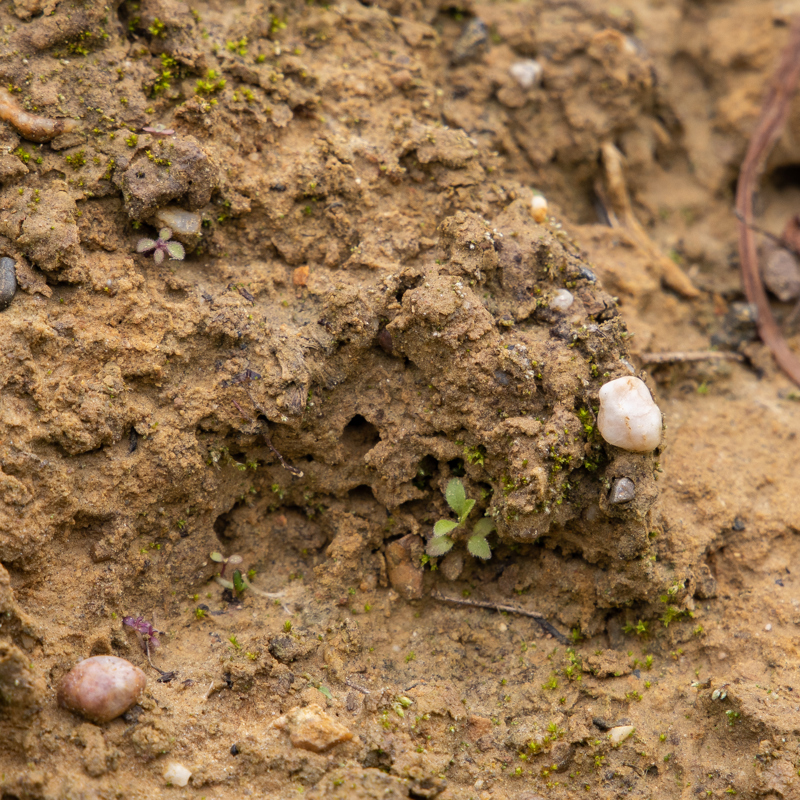These ingredients made the sea of flowers bloom on the Groene Loper Maastricht
Snakeweed, cornflowers, meadow sage, poppies, knapweed, hawksbill seed, daisies, ox tongue… It all grows on the Groene Loper in Maastricht, a Ballast Nedam project. How did this come about? With two indispensable ingredients: mutual trust and Limburg marl, the ecological gold.
That barrier has now disappeared. In a consortium, Ballast Nedam has moved 2.6 kilometres of the motorway into a double-deck tunnel. The tunnel allowed two separate living areas to become one again and created the space for a ‘green avenue’. The result is a 5-kilometre-long park that connects the natural areas with the city. At the same time, the vacated space has made room for sustainable energy-neutral houses and 30,000 m2 of commercial property. Onno Dwars, CEO of Ballast Nedam Development: “Already in the tender phase, we actively looked at options to make the project as green and biodiverse as possible. We take the seventeen Sustainable Development Goals of the United Nations seriously and we simply see biodiversity as the basis of our existence. That is why it is only logical to contribute to the recovery and flourishing of nature in the built environment.”
Biodiversity as a top priority
Years after Peter's hot air balloon flight, the area is now a party for bees and residents. Peter received a call from Projectbureau A2 in 20218, asking how De Groene Loper Maastricht could become even more biodiverse. The project team wanted to address this need from the city in close collaboration with the municipality, the Vogelbescherming and other parties.
For Peter, this collaboration was an excellent opportunity to apply his knowledge of ecology. “Initially we only talked about the vegetation along the long road of De Groene Loper Maastricht, but this project is much bigger than that. The vacant hectares of land, where houses are now being built, were part of it as far as I was concerned. I saw opportunities, because we could easily create a sea of flowers on those hectares if we managed the space intelligently.”
I saw opportunities. We could easily create a sea of flowers on these hectares
“I pioneer just like the bees to,” says Peter. “And it pays off. Recently I saw two women picking a bunch of flowers here. A waste of nature? Absolutely not. That means we beat the supermarket.”


Marl and trust: essential for flowers and wild bees
On the De Groene Loper Maastricht project, Peter used his knowledge smartly. "With marl from Limburg we ensure that the grass does not become dominant. It's a perfect match because marl is great for native flowers, but it dries out too quickly for the grass. As a result, the grass cannot suppress the flowers.”
After a long search, Peter arranged a large quantity of suitable marl from the former ENCI quarry in Maastricht. “This has been a wonderful collaboration”, Peter reflects. “Ballast Nedam, the municipal departments, Projectbureau A2, Transformation ENCI, Lievense, West8 and others have worked together. In this way we were able to get 500 tons of marl from the quarry donated, inspected and transported. Then we applied it at the right time, in the right place and in the right form.” When the long-awaited day arrived, volunteers helped Peter sow a special seed mixture for calcareous soil. Now, one year later, the flourishing result can be seen.


For the 180 bee species in Maastricht, it is becoming increasingly difficult to survive. This is why they made good use of the bare ground and mounds of the marl, where they can easily make a small hole in the soil, surrounded by flowers. The grasshoppers are also happy with the bare ground. They lay its eggs on the plains, after which they hide under the flowers and plants. “The flowers take some time to penetrate the marl, but when they finally bloom, they are not bullied by the grass. This is better for the flowers and easier to maintain.”
Shifting mosaic
One of the most important parts of De Groene Loper Maastricht is the snakewort: an icon for Maastricht's biodiversity. Ideal, because it is precisely in this region that a rare species of bee lives that only comes to this herb: the snakewort bee. “With the volunteers we got the plants from another part of the city. In pots we nurtured it at home for months until we could plant it here in May 2020. It has bloomed fantastically.”
The snakeweed is not the only part that succeeded. The cornflowers already bloomed last year, but did well again this year. The bumblebees are happy with the poppies and the ox tongue. And the knapweed blooms on the roadsides. The early bees are attracted to the growing woad: an old dye plant from the cruciferous family. The evening primrose is popular among the moths and the daisies are also successful this year.
However, not all sown species emerge. No problem, says Peter. “That's how nature works. Maybe they will seize their chance next year.”
We took care of the snake herb at home for months
From Ballast Nedam Development, Onno is also more than satisfied with this project. “Biodiversity always plays an important role in our projects. At the De Groene Loper Maastricht project, we naturally gained new insights and gained additional knowledge. We will definitely take this with us to future projects, so that we can also create beautiful places for flora and fauna there.”
Surrounded by flowers, Peter looks over the fields. He grins: "This project is particularly successful if it is also applied elsewhere in the region. The bees move on, so we have to constantly look for new places. That is why I strive for a shifting, blooming and buzzing mosaic that travels through the city. That would be perfect.”






